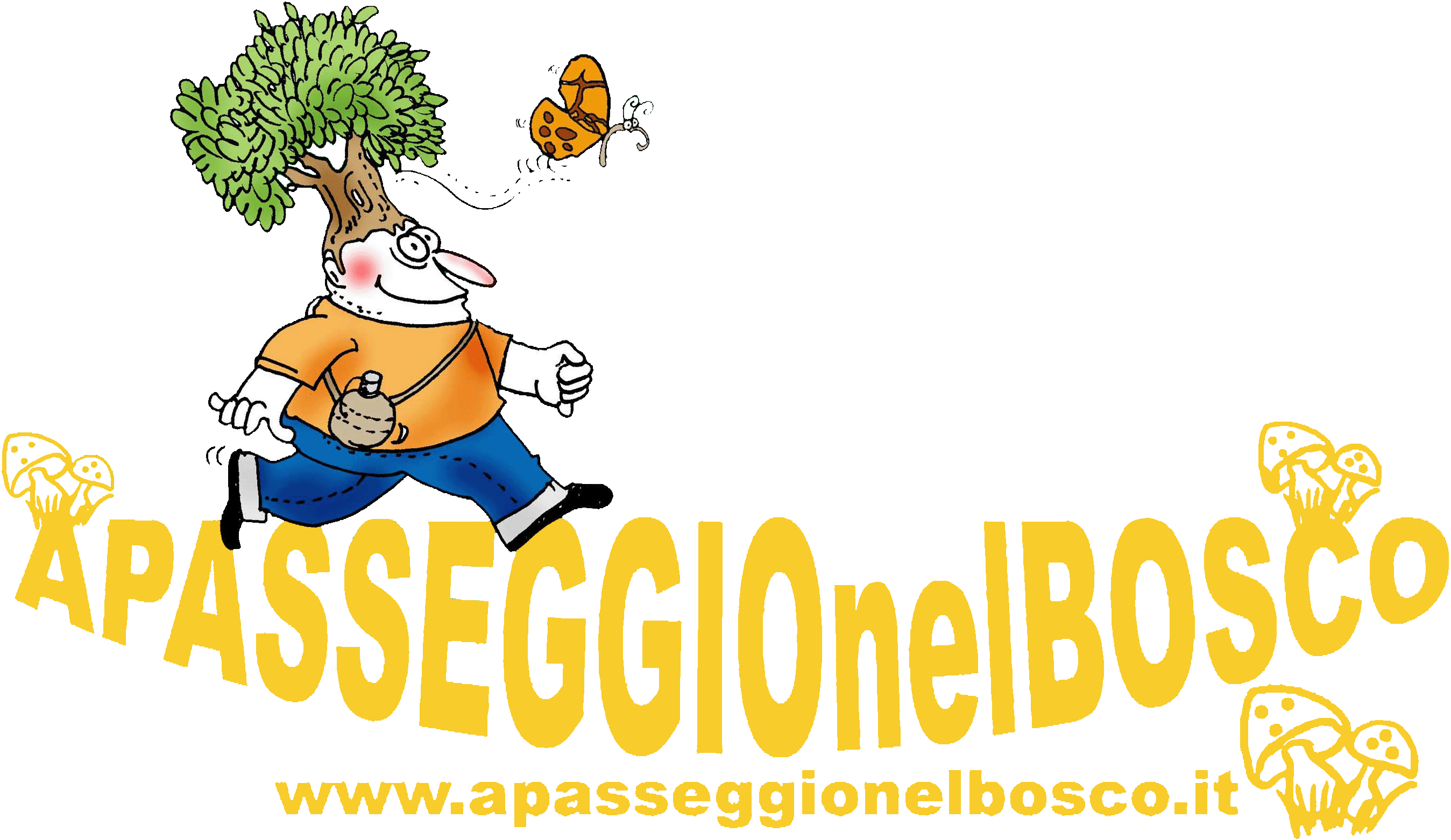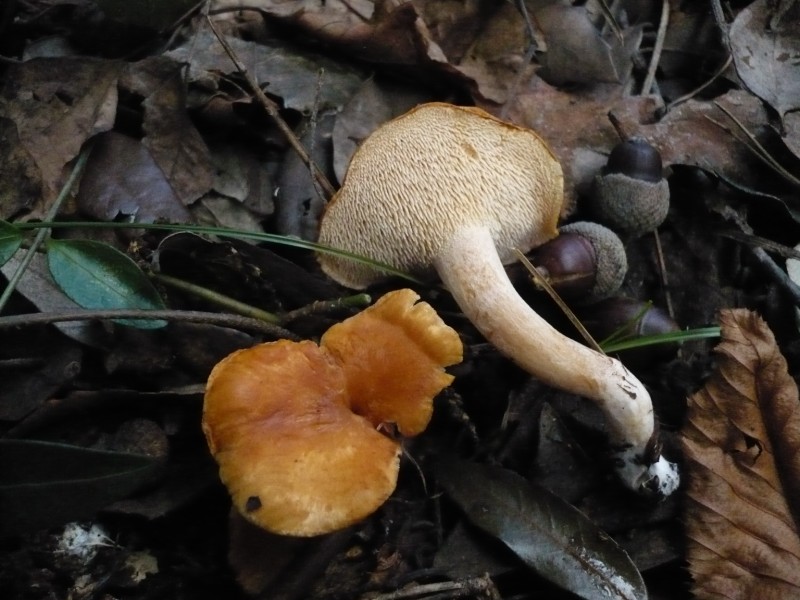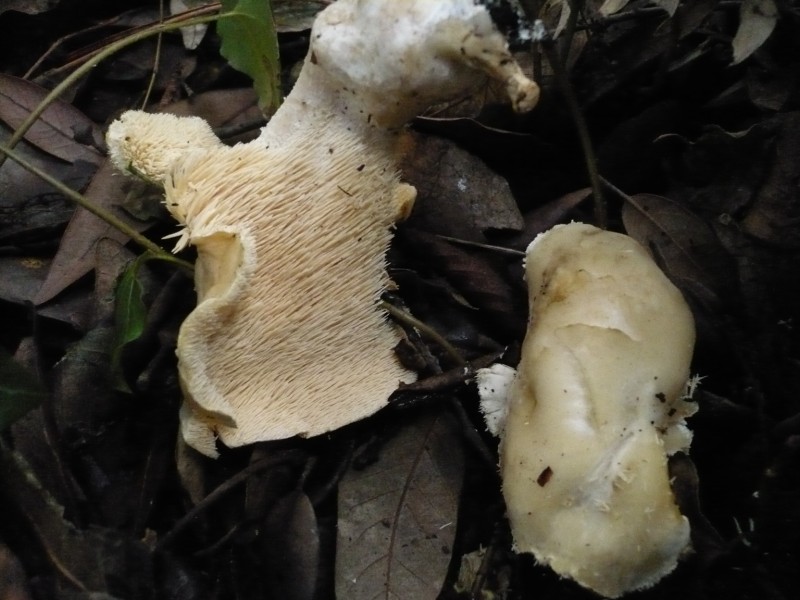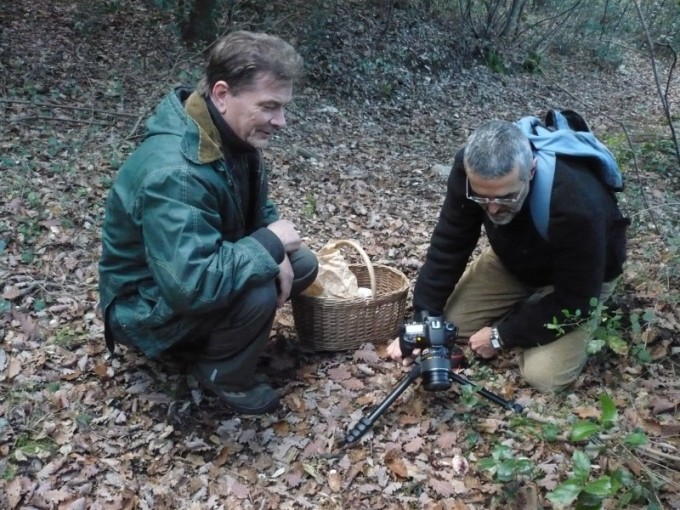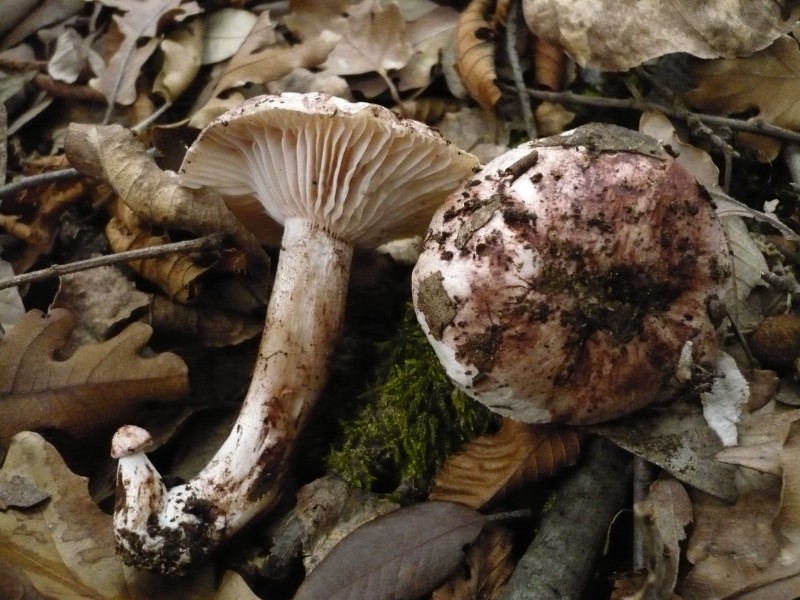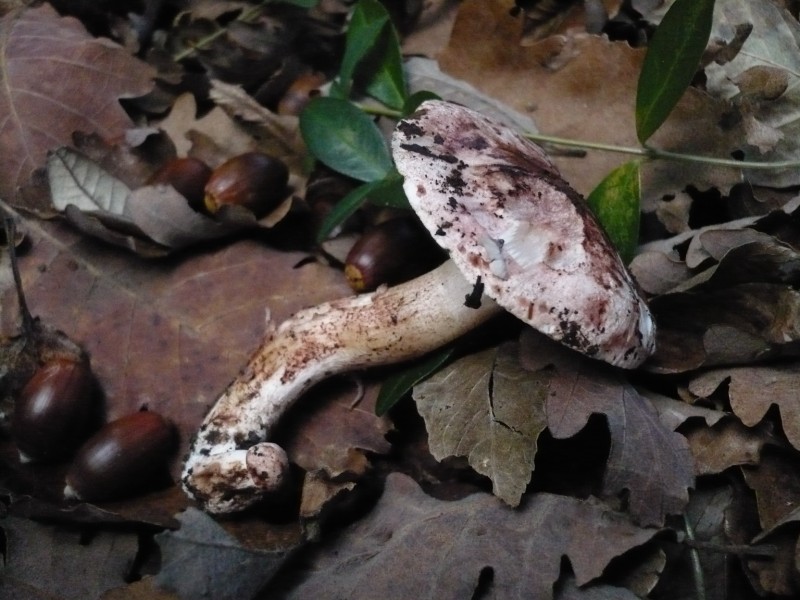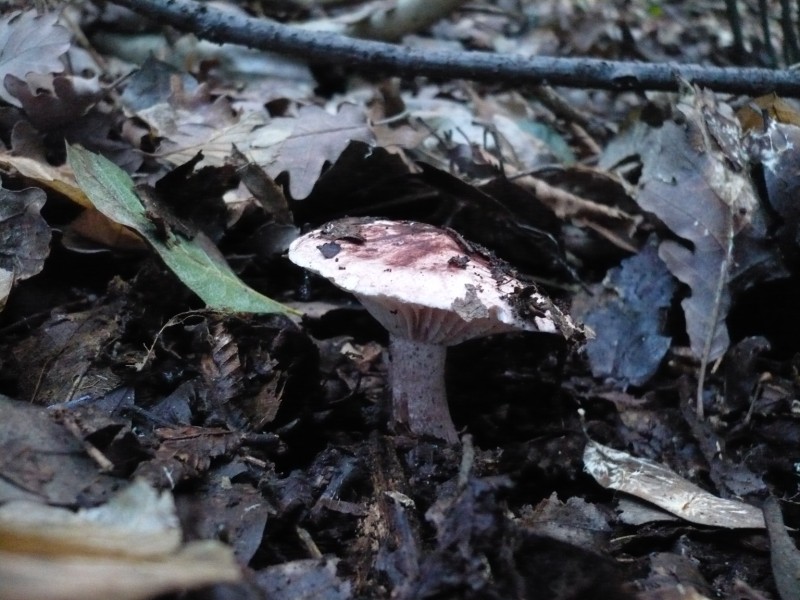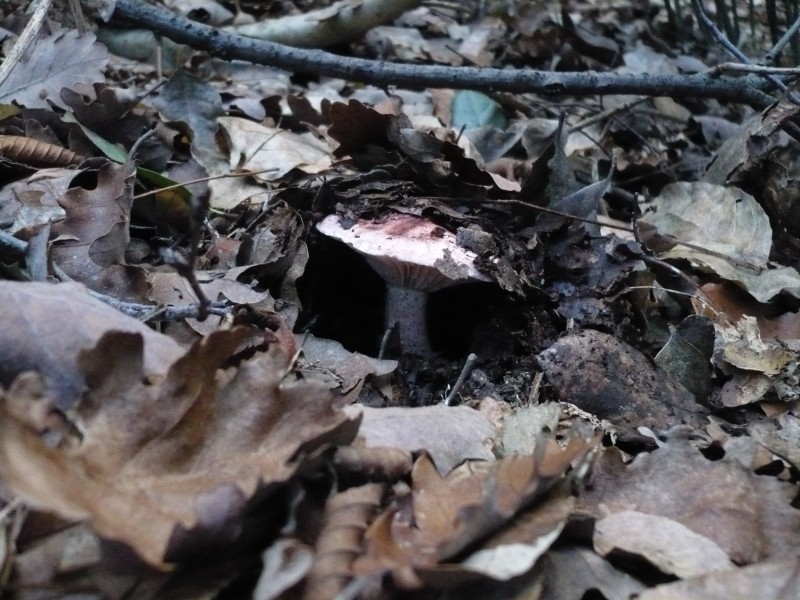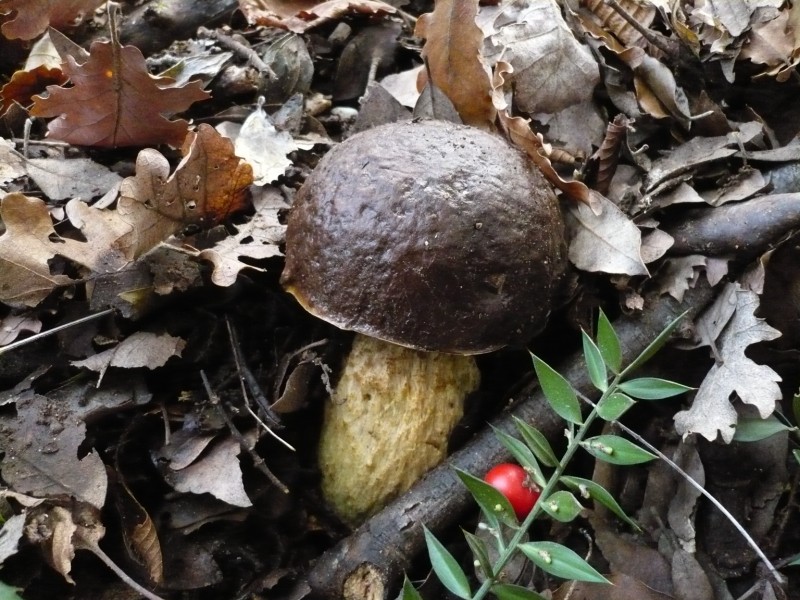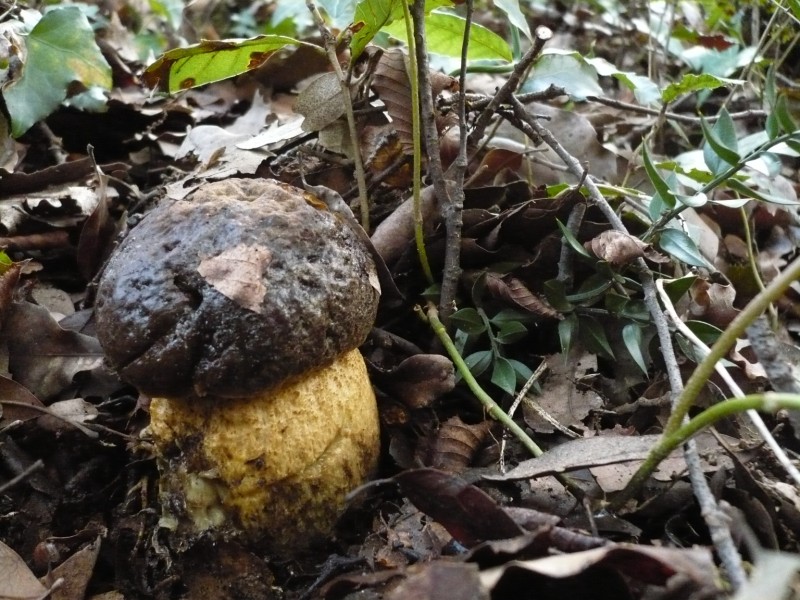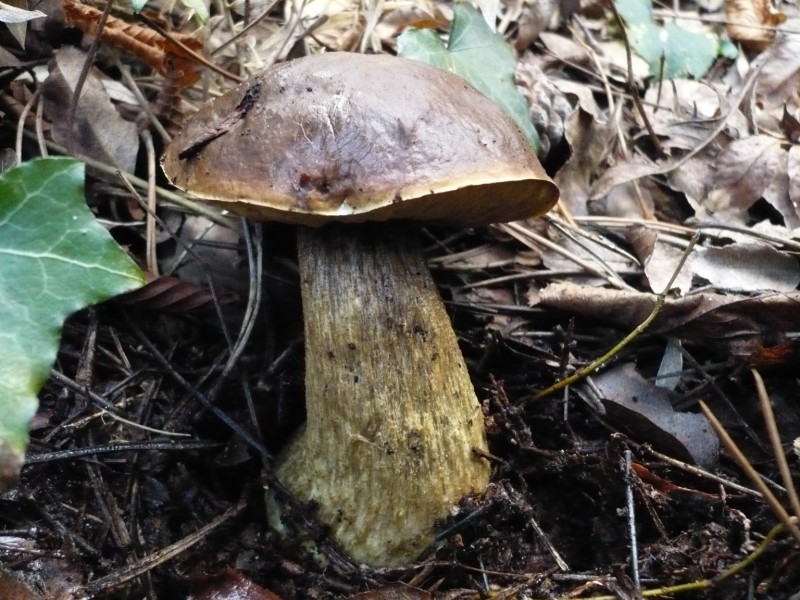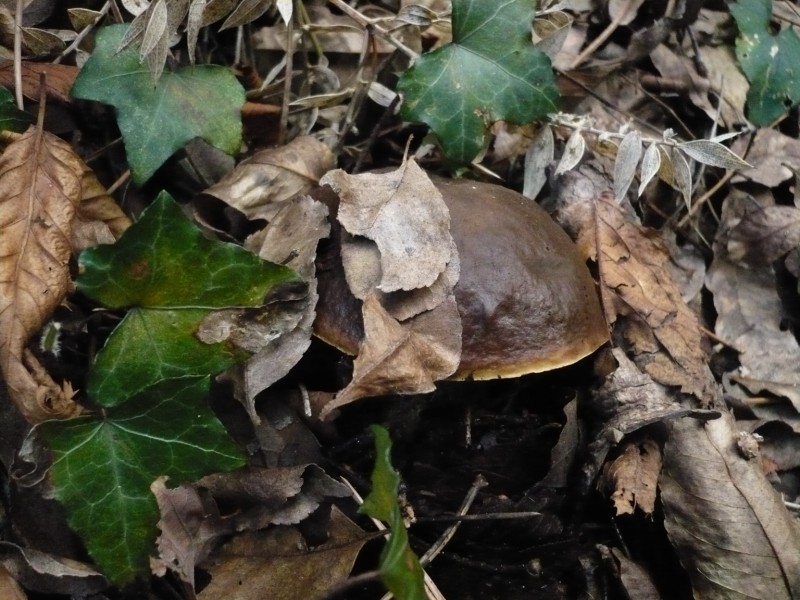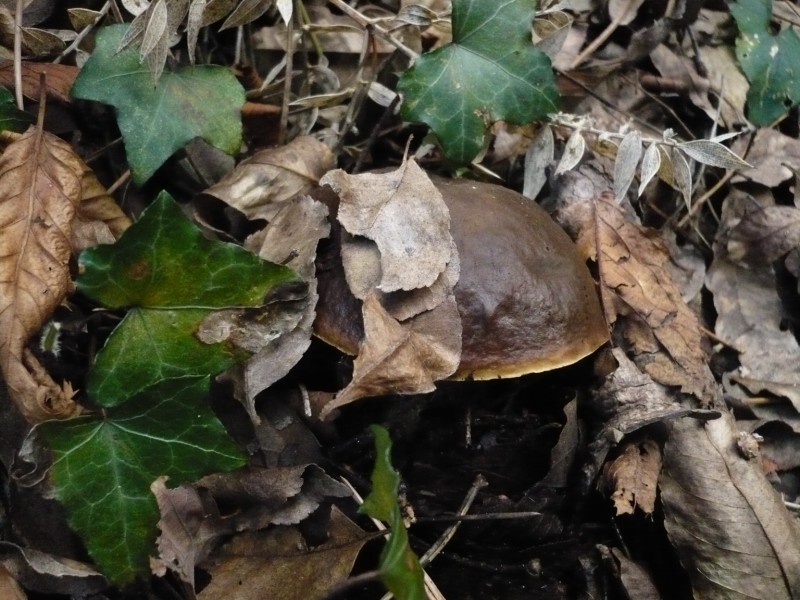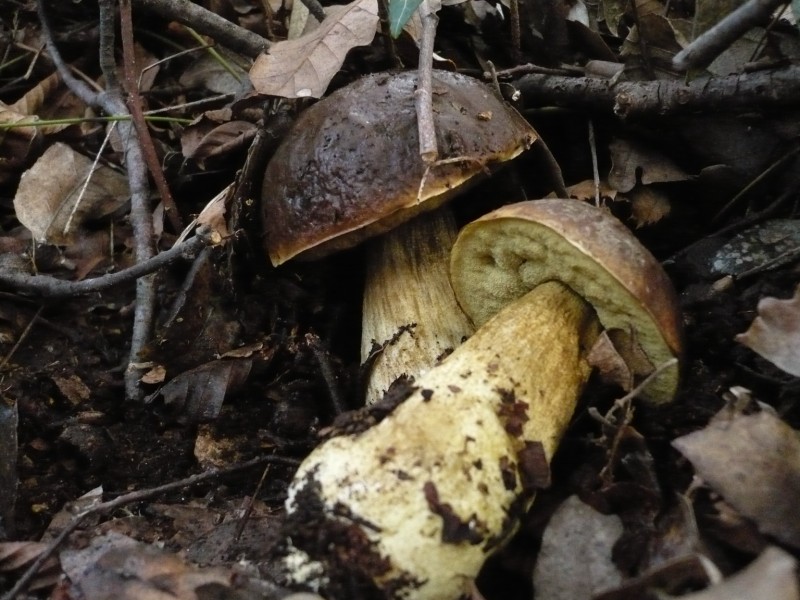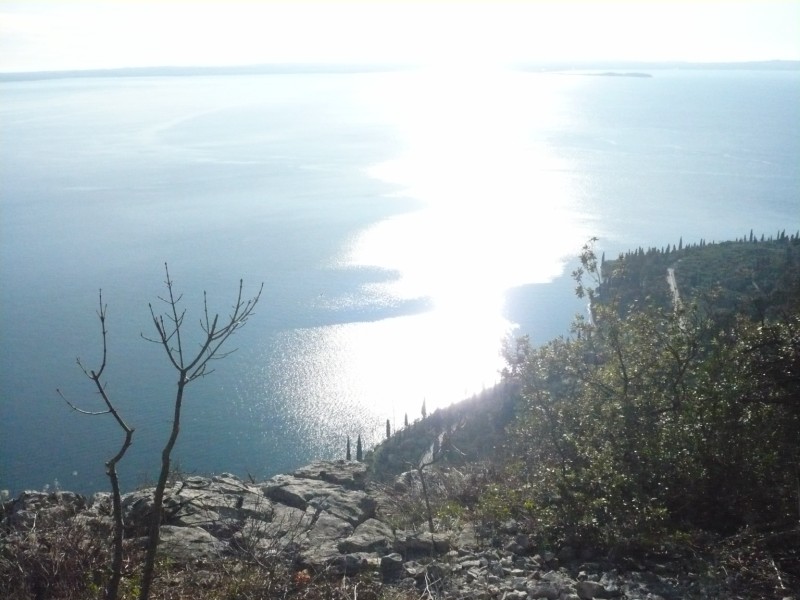-
Numero contenuti
2803 -
Iscritto
-
Ultima visita
-
Giorni Vinti
3
Tutti i contenuti di peter
-
Un ulteriore Hydnum, reperibile in autunno nei boschi di roverella della nostra provincia, e trovato nel bosco di lecci odierno è l'Hydnum rufescens, di dimensioni inferiori al cugino Hydnum repandum e con una cuticola dal colore tendente al rosso mattone.
-
Proseguiamo con i ritrovamenti. Passiamo ai funghi con imenio costituito da idni. Un interessante fungo, infrequente nella nostra area, è l'Hydnum albidum
-
Qui sono ripresi i due compagni della mia uscita impegnati nel riprendere gli igrofori russula. A sinistra Gian (Albisano), guida straordinaria, e a destra Giorgio, micofilo appassionato del gruppo micologico DLF di Verona .
-
-
-
-
e per continuare sul tema di funghi mediterranei il bosco da favola ci ha omaggiato di un fungo che anche in stagione autunnale scarseggia qui da noi ovvero l'Hygrophorus russula. E' da circa 15 anni che non lo vedevo nelle prealpi e alpi. Anche qui il fungo era appena visibile coperto com'era da foglie .
-
-
-
-
-
-
Andiamo a vedere che cosa il bosco da favola è stato in grado di regalarci i. Partiamo dal un fungo che mai prima d'ora non avevo mai reperito nelle mie escursioni in provincia di Verona. Si tratta del Leccinum lepidum. Ne abbiamo trovati una decina; alcuni erano un pò cotti dal freddo di questi ultimi giorni , altri invece per il colore e la forma ci hanno trasmesso quelle emozioni che solo gli importanti ritrovamente estivi o autunnali sono in grado di darci. E oggi è il 29 dicembre e non siamo in Toscana o nel Lazio o nel Sud Italia ma in provincia di Verona. Una coppia di leccini.
-
Qui ripresa è Punta San Vigilio senza sole
-
Qui ripresa è Punta San Vigilio senza sole
-
Sono stato invitato dall'amico Gian (nick Albisano) ad una uscita in un bosco del tutto particolare, alla ricerca di funghi che normalmente popolano i boschi mediterranei in tardo autunno. Il bosco da favola visitato oggi si trova in un'areale del tutto particolare ovvero a poche centinaia di metri dal Lago di Garda, sul versante veronese, non distante dall'abitato di Garda. Il bosco è unico nella nostra provincia perchè popolato da lecci ed è frequentato da appassionati micofili proprio perchè in esso si sviluppano specie fungine difficilmente o non reperibili nel veronese. E' inutile sottolineare il fatto che il bosco è definibile da favola anche perchè è possibile godere di alcuni straordinari scorci panoramici come quello qui riportato Lago di Garda con punta san Vigilio (con il sole)
-
Olga nn my opinion is very difficult to confuse the Tricholoma atrosquamosum (and others cited by you) with Tricholoma pardinum. T. pardinum normally has: 1) a bigger shape than the other "black" tricholoma 2) the stem of the T. pardinum is normally harder, clavate and elastic not fragile as the other black Tricholoma 3) the gills are white initially with blue reflexes, then jallowish 4) the flesh is withish in the cap but often at the base of the stem there are some rose spot 5) the flesh smell of flour (not spicy); the flavour of the flesh is sweet. 6) the cuticle of the cap is broken in scales greysh-brown. Ciao (By, By) Piero
-
Olga As far as I know the majority of the Inocybe species defined as mushrooms with suspected or proved toxicity or not edible. This is the edibility rule of some Italian species of Inocybe, reported in some mushrooms guides: I. terrigena: suspected toxicity I. jurana: edible but of poor quality I. rimosa: toxic I. bongardii: toxic I. cervicolor: suspected toxicity I. calamistrata: suspected toxicity I. piriodora: suspected toxicity I. geophylla: toxic I. godey: suspected toxicity I. mixtilis: suspected toxicity I. asterospora: toxic I. patouillardii: toxic I. corydalina: suspected toxicity I. tenebrosa: suspected toxicity I. dulcamara: suspected toxicity I. fibrosa: suspected toxicity I. sambucina: suspected toxicity I. umbratica: suspected toxicity I. praetervisa: suspected toxicity I. grammata: suspected toxicity I. lanuginosa: suspected toxicity I. petiginosa: suspected toxicity I. fuscidula: suspected toxicity I. nitidiuscula: suspected toxicity I. fastigiata: toxic I. lacera: toxic I. pisciodora: suspected toxicity I. bresadolae: suspected toxicity I. cookei: suspected toxicity I. pisciodora: suspected toxicity I. oblectabilis: suspected toxicity I. cincinnata: suspected toxicity I. griseolilacina: suspected toxicity I. pusio: suspected toxicity I. heimii: suspected toxicity I. hystrix: suspected toxicity I. terrifera: suspected toxicity. Therefore we agree with the data reported in the Israeli mushroom books and we cannot suggest you to collect and eat any species of Inocybe. In the mycological guides and books Inocybe hirtella is reported as toxic mushrooms with muscarinic syndrome. In any case let me informed if one o more people eat a well identified (with spore microscopy) Inocybe without reporting any toxic symptom. The information can be useful to some our friends autors of mushrooms guides. Best regards. Piero
-
Ciao Peppe auguri vivissimi di Buon Natale a te e famiglia. E per il 2010 il mio augurio micologico è che tu possa ripetere gli exploits del 2009; sul piano personale ti auguro serenità, salute, s...o e tanti schèi . Piero
-
Dear Olga it is very interesting to have information about the mushrooms growing in Israel. Looking at the pictures that you showed it seems to me that the Boletacea is not Leccinum crocipodium which generally has : a cuticle jellow , jellow olivaceous, brown jellow and superficially cracked; the stem, lemon at apex , covered in yellows scale that when touched become dark grey; the flesh is pale yellow and, when cutted, become vinaceous, greysh, black; the pores are pale yellow, darker at bruising. The mushrooms in the photo has not these morphological properties. Instead it looks like Leccinum lepidum as you suggested. It would be interesting to know the habitat of this Leccinum. If the trees are oaks probably we have the "classical" Leccinum lepidum that we can find during the entire winter along the coasts of Central and South Italy. If the tree is Cistus, instead of Lepidum, the mushrooms could be Leccinum corsicum (synonimous Leccinum sardoum). Regards. Piero
-
Alla vigilia di Natale il secolo XIX di Genova segnala un'intossicazione di una gruppo familiare dovuta al peven ovvero alla Clitocybe nebularis conservata in vaso di olio. Probabilmente non adeguatamente cotta o mal conservata ma in ogni caso da tempo gli esperti e sopratutto i tossicologi sconsigliano di consumare questo fungo considerato a ragione come fungo a "tossicità incostante" Per lettura della news completa si rimanda il lettore all'indirizzo: http://ilsecoloxix.ilsole24ore.com/p/levan...ta_funghi.shtml. Buon Natale a tutta la APB. Piero
-
Olga you are right. The Tricholoma squarrulosum is a variety of the Tricholoma atrosquamosum with a peppery smell and black scales and black fibrils on the white stem. The typical habitat of the Tricholoma squarrulosum is deciduous woods while the Tricholoma atrosquamosum habiata are deciduous and coniferous woods. The major difference between the T. squarrulosum and T. atrosquamosum is the density of the scales in the cap cuticle and in the stem. The flesh and gills of the T squarrulosun are generally whitish grey while tricholoma atrosquamosus has gills with edge grey or black dotted. In conclusion the differences between the two species are limited. Both species are edible. By by Piero
-
Hi Olga in some mycological guides Tricholoma basirubens is called Tricholoma orirubens variety basirubens: in fact it is considered a variety of the the orirubens species. Even Tricholoma orirubens variety orirubens has the flesh becoming pinkish when cut or at maturity but the base of stem has some blue or green spots. Therefore Tricholoma basirubens is a variety of the Tricholoma orirubens. Piero
-
Ciao Daniele nelle foto di Olga mi sembra di vedere solo funghi con una cuticola provvista di squame grigie-nerastre. Anche i primi 2 hanno squame grigie-nerastre su base biancastra. Ciao. Piero X Olga my friend Daniele is saying that, while agreing with the determination of the Tricholoma basirubens and Tricholoma squarrulosum, he think that the first two your photos are representing an other species of Tricholoma or Tricholoma saponaceum. In my answer to Daniele I said that I did not see a smooth cuticle typical of the Tricoloma saponaceum. Hi Piero
-
Olga in any case for the determination purposes it useful to leave uncutted the stems of the mushrooms. Best regards. Piero
APasseggionelBosco ODV

